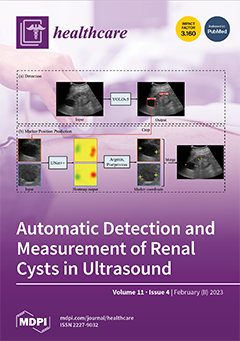The primary goal of this retrospective study is to understand how the COVID-19 pandemic differentially impacted transplant status across race, sex, age, primary insurance, and geographic regions by examining which candidates: (i) remained on the waitlist, (ii) received transplants, or (iii) were removed
[...] Read more.
The primary goal of this retrospective study is to understand how the COVID-19 pandemic differentially impacted transplant status across race, sex, age, primary insurance, and geographic regions by examining which candidates: (i) remained on the waitlist, (ii) received transplants, or (iii) were removed from the waitlist due to severe sickness or death on a national level.
Methods: The trend analysis aggregated by monthly transplant data from 1 December 2019 to 31 May 2021 (18 months) at the transplant center level. Ten variables about every transplant candidate were extracted from UNOS standard transplant analysis and research (STAR) data and analyzed. Characteristics of demographical groups were analyzed bivariately using t-test or Mann–Whitney U test for continuous variables and using Chi-sq/Fishers exact tests for categorical variables.
Results: The trend analysis with the study period of 18 months included 31,336 transplants across 327 transplant centers. Patients experienced a longer waiting time when their registration centers in a county where high numbers of COVID-19 deaths were observed (SHR < 0.9999,
p < 0.01). White candidates had a more significant transplant rate reduction than minority candidates (−32.19% vs. −20.15%) while minority candidates were found to have a higher waitlist removal rate than White candidates (9.23% vs. 9.45%). Compared to minority patients, White candidates’ sub-distribution hazard ratio of the transplant waiting time was reduced by 55% during the pandemic period. Candidates in the Northwest United States had a more significant reduction in the transplant rate and a greater increase in the removal rate during the pandemic period.
Conclusions: Based on this study, waitlist status and disposition varied significantly based on patient sociodemographic factors. During the pandemic period, minority patients, those with public insurance, older patients, and those in counties with high numbers of COVID-19 deaths experienced longer wait times. In contrast, older, White, male, Medicare, and high CPRA patients had a statistically significant higher risk of waitlist removal due to severe sickness or death. The results of this study should be considered carefully as we approach a reopening world post-COVID-19, and further studies should be conducted to elucidate the relationship between transplant candidate sociodemographic status and medical outcomes during this era.
Full article






